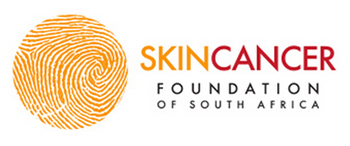FREE skin cancer screenings by top participating dermatologists on 1 September 2021
On 1 September 2021, participating dermatologists throughout South Africa will be offering free skin cancer screenings and treatment.
“We are inviting individuals who ordinarily can not afford such treatment to visit www.skincancerfoundation.co.za to find the list of participating dermatologists. Appointments can be made via saskincancerfoundation@gmail.com and they will be awarded on a first-come, first-served basis. “Given the intensive nature of the screening, each participating dermatologist will see only five patients on each of the allocated days,” says participating dermatologist, Dr. Marc Roscher.
“Skin cancer is one of the most pervasive cancers currently affecting patients worldwide. Skin cancer has one of the advantages of being visible. This means one can constantly assess one’s skin for lesions that were not there previously, or do not belong there,” says Dr. Marc Roscher. “Early diagnosis and definitive treatment by a dermatologist is the shortest route to skin health. The dermatologists of South Africa are giving back to South Africans by offering free skin cancer screening nationwide. Please note that only participating dermatologists are taking part in this program and that no free treatment is included in this initiative – the focus is to encourage early detection via free diagnosis.”
Sunburn advise from the SCF.
Sunburn is inflammation of the skin caused by overexposure to the harmful rays of the sun. This, in itself, can create several complications. For example, when temperatures soar, protection is needed against heat rash, heat stroke, and sunburn.
Dr. Katherine York, a dermatologist based in private practice at Netcare Greenacres Hospital in Port Elizabeth, shares some South African statistics: “Non melanoma skin cancer incidence (NMSC) incidence rates in South Africa are high even though rates are often grossly underreported due to incomplete case reporting to the National Cancer Registry. It is estimated that 25.4% of all cancers diagnosed in men in South Africa in 2014 were basal cell carcinoma (BBC), while 10.9% were squamous cell carcinoma (SCC) [1]. In females, the numbers were 18.6% and 7.1% for BCCs and SCCs, respectively [1]. When compared to rates from 2009, this shows that incidence is increasing [2]. Although data on malignant melanoma (MM) incidence on the African continent remain scarce, a recent study showed that the overall incidence of MM for South Africa to be 2.7 per 100 000. The incidence in the white population was significantly higher, at 23.2 per 100 000 [12]. MM in darker skin types often presents as acral melanoma, a rare distinct variant of MM that arises from the palms, soles, and nail apparatus and is associated with a poorer prognosis [3-5]”.
A sunscreen or total sunblock is a vital accessory when heading outdoors. If possible, apply sunscreen 30 minutes before going out into the sun, since it takes that long to be absorbed into the skin. The SPF (sun protection factor) in sunscreen indicates the amount of protection. For example, a tested SPF of 23 implies that the user can remain in the sun twenty-three times longer than without protection before burning.
Before applying sunscreen, check the expiry date on the bottle and replace it if necessary. Remember to shake the bottle before using it, reapply lotion after sunbathing, towel drying, or after sweating heavily. In the event of over-exposure to the sun, apply cool tap water compressed for 10 to 15 minutes, three or four times per day, until the redness subsides. This can provide immense relief since the evaporating water will moisten and cool the skin.
A sunburn relief spray or moisturising cream will further ease discomfort. Doctors strongly caution against using petroleum jelly on a burn, since it will seal out the air needed to ensure healing. In the case of severe sunburn, blistering, pain, nausea, or chills, contact a doctor immediately. Steroid ointments or creams may be prescribed, and large blisters might have to be drained and dressed.
“If you want to minimise the risk for most skin cancers, then keep your skin rich in vitamin A and antioxidants,” says Prof. Des Fernandes, a Plastic Reconstructive Surgeon and founder of Environ Skincare Products.
It’s about creating simple habits and a healthy respect for the sun:
- Don’t wait for a red glow to appear before reaching for your hat or sunblock. In fact, most sunburns do not reach their peak colour until six to twenty-four hours after sun exposure!
- Always wear protective clothing, hats, and shirts before going out into the sun.
- Even 30 minutes in the sun without protection is too long!
- Remember, as you move inland, above sea level, the sun’s rays become more intense.
- Avoid being out in the sun between 11h00 and 15h00 when the sun is at its strongest.
- Don’t skip the sunscreen when it is slightly overcast, particularly not if you are on the beach, since ultraviolet light can penetrate light cloud cover.
- Exposure to the sun while overdressed only adds to skin distress. So do thick lotions and oils, such as petroleum jelly, because they prevent moisture evaporation, thereby blocking pores and resulting in heat rash.
- Beware of the glare, particularly at the seaside, where you are unlikely to find natural shade. Do not rely on a beach umbrella alone since it cannot protect the very young or elderly from the reflected glare of the sun on the sand. Instead, pitch a small beach tent, which will provide adequate shelter.
- UVA rays pass through glass. A person sitting near a window (unless tinted for sun screening) is also susceptible to the sun’s damaging rays.
“The lack of melanin and exposure to intense ultraviolet radiation increases the risk of developing skin cancer. This means the lack of melanin in Albinos increases the risk of developing skin cancer a thousand times over as compared with the general African population. Regular screening is imperative. So, please take advantage of this initiative,” encourages dermatologist, Dr. Nomphelo Gantsho.
Awareness and early detection are paramount. The Skin Cancer Foundation of South Africa was founded to alert people to the signs and save lives that may otherwise be lost. Many people don’t realise that burning red in the sun is the precursor to skin cancer. Just one bad burn can lead to years of skin issues, particularly in later life.
“We live in a new era where advanced surgical treatment, such as MOHS surgery, allows for minimally invasive and accurate skin cancer removal. Also, new genres of therapeutic agents are now available that literally are cures for cancer. These new molecules are not traditional chemotherapy agents, but are molecular medications that are directed against the tumour receptors themselves, and have remarkable clinical efficacy. Are we there yet? Certainly not. But the medical interventions are improving in leaps and bounds, and we have so much more to offer than we did ten years ago. The key message is that early detection and treatment are essential. So, be fastidious about checking your skin,” stresses Roscher.
The Skin Cancer Foundation of South Africa would like to give special thanks to Clinisut, who are generously donating sutures towards the drive. Thank you too, to Galderma and Eucerin for their generous involvement with the Foundation and this annual initiative.
Notes to editors
Vision and mission of the South African Skin Cancer Foundation: Skin cancer is one of the most common cancers worldwide, and this is no different in South Africa. To address the growing incidence of skin cancer in this country, the South African Skin Cancer Foundation (SCFSA) was created to implement a National Skin Cancer Screening Day. It is held annually in September. Facilitating these events and projects requires particular skill and insight, which the SCFSA provides.
With the aid of extensive media coverage, we aim to educate South Africans about the dangers of skin cancer and how to avoid it. It is also the foundation’s role to assimilate and distribute information about skin cancer and its symptoms to the lay public, press, and medical professionals. A lack of data about skin cancer in South Africa is a pressing concern, and would also form a vital component of the SCFSA and its activities.
The foundation has resolved to operate in a manner similar to SCFs in other parts of the world and interact and cooperate with any groups, individuals, and societies that share our vision and can benefit from or contribute to the work that is being done.
Issued by: Skin Cancer Foundation of South Africa (SCFSA)
1)National Cancer Registry data, 2014, http://www.nicd.ac.za/wp-content/uploads/2017/03/2014-NCR-tables-1.pdf (accessed 15 July 2019). 2)National Cancer Registry data, 2009, http://www.nioh.ac.za/wp-content/uploads/2018/03/NCR-2009-results.pdf (accessed 15 July 2019). 3)M. Norval, and C. Y. Wright, “The epidemiology of cutaneous melanoma in the white and black African population groups in South Africa,” in Cutaneous Melanoma: Etiology and Therapy, W. H. Ward and J. M. Farma, Eds., pp. 23–38, Codon Publications, Brisbane, 2017. View at: Google Scholar 4)F. Durbec, L. Martin, C. Derancourt, and F. Grange, “Melanoma of the hand and foot: epidemiological, prognostic and genetic features: a systematic review,” British Journal of Dermatology, vol. 166, no. 4, pp. 727–739, 2012. View at: Publisher Site | Google Scholar 5)J. De Wet, B. Tod, W. I. Visser, H. F. Jordaan, and J. W. Schneider, “Clinical and pathological features of acral melanoma in a South African population: a retrospective study,” South African Medical Journal, vol. 108, no. 9, pp. 777–781, 2018. View at: Publisher Site | Google Schola

